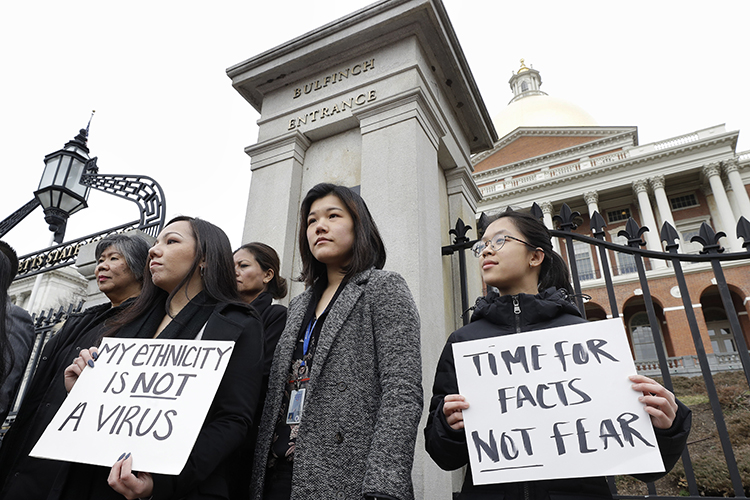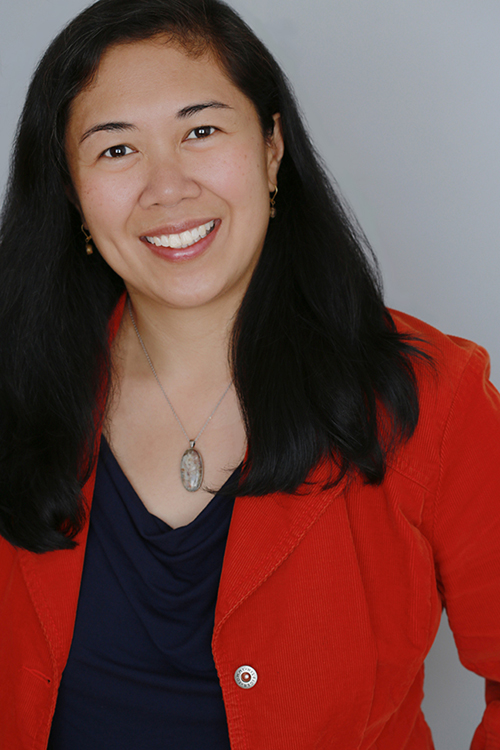Racist harassment of Asian health care workers won’t cure coronavirus

On his way to work, a doctor was told to “go back to f—— China.” An Asian nurse delivering medicine to a sick patient was spat on. And parents at a children’s hospital refused care from health care staff with “Asian appearances.”
Violent hate crimes against Asian Americans have surged across the United States recently due to xenophobic perceptions that all Asian people are carriers of COVID-19. But some forms of harassment have been directed specifically at the Asian physicians and nurses risking their own health and safety to battle the spread of the virus in hospitals across the country.
“It’s really heartbreaking,” said UC Berkeley ethnic studies professor Catherine Ceniza Choy. “These health workers are parents, they’re daughters and sons. They are sisters and brothers. They’re our neighbors. … This is an additional level of trauma, anxiety and stress that we don’t need to place on them.”

Choy has taught at Berkeley since 2004 and has long studied Asian American history and ethnic studies. Some of her research has focused on the reasons why Asian countries, most notably the Philippines, have become the leading exporters of nurses to the United States.
According to the Pew Research Center, the Asian population in the U.S. is the fastest-growing ethnic group in the country. Some of that growth comes from Asian-born health care workers that migrate here. A Thomson Reuters report found that, of health care professionals surveyed in the United States, 17% were foreign-born, and Asian-born staff made up the most.
In California alone, 25% of active registered nurses are either Asian-born or Asian American, according to research from the Healthforce Center at UCSF.
Despite having so many Asian health care workers on the front lines combating COVID-19, the history of associating Asians as disease carriers is repeating itself, said Choy.
“There’s a longer history of blaming Asia and Asian migrants and, by extension, Asian Americans for outbreaks of disease,” she said. “COVID-19 is just the most current example of this history.”
Choy talked with Berkeley News about that history and the reasons xenophobia can halt collective attempts to stop the spread of the coronavirus.
Berkeley News: What has the experience been like for Asian health workers amidst this pandemic?
Cathy Ceniza Choy: We’re seeing reports of how stressed health workers are because of the incredible numbers of patients coming in with symptoms of COVID-19, and because they don’t have the personal protective equipment to protect themselves from the virus.
They have to go home to their families, and they don’t want to expose them, so many of them are isolating themselves away from their family members. It’s so heartbreaking. Many of them are also Asian migrants or Asian American.
Historically, the U.S. has been the leading recipient of over 150,000 Filipino nurse migrants who have come to this country to work in hospitals that are often serving the most underserved populations, in inner city hospitals, as well as rural areas.
They are also currently on the front lines of fighting this pandemic.
So, we need to be very careful not to blame these health workers for this disease, because, in addition to being human beings, they are taking care of our parents, our siblings, our spouses. They might be taking care of you, and they don’t need that added stress while trying to save lives.
For most of us right now, in terms of honoring the shelter-in-place orders, we’re able to do that because there are health workers like Filipino nurses, and Asian Indian immigrant physicians, who comprise the largest number of foreign trained physicians in the U.S.
We can be with our families because they are doing what they do.
What is the history of blaming Asians for the spread of disease, and how does that history relate to today?
Tragically, there is a longer history of this association between Asians as disease carriers, and a longer history of blaming Asian and Asian migrants and, by extension, Asian Americans, for outbreaks of disease. COVID-19 is just the most current example of this history.
Chinese Americans and Chinatowns in the U.S. were linked to smallpox outbreaks in the 19th century. In the early 1900s, Japanese arrivals to the U.S. were racially profiled and also targeted for examination because they were associated with the bubonic plague.
This has also impacted Filipinos in the Philippines, which was an official U.S. colony from 1898 to 1946. Health officials would refer to Filipino bodies as ‘incubators of leprosy.’ They used outbreaks of cholera in the Philippines to justify U.S. colonialism, saying that white Americans could bring health in the form of sanitation.
COVID-19, unfortunately, has been called the ‘Chinese virus.’ That is a misnomer, because pandemics and diseases see no national borders. They don’t recognize color. They don’t see the ethnic enclave borders of a Chinatown or a Chinese restaurant.
But we know that President Trump and some of our politicians have used that reference in their communication about COVID-19.
As we’ve seen, though, that historical linkage between Asian bodies and disease, and the rise in hate crimes, is something that has impacted all Asians and the Asian diaspora throughout the world — not solely Chinese and Chinese Americans.
How does this Asian xenophobia and racism impact other ethnic groups? How does it affect our attempts to combat the spread of COVID-19?
It’s harmful to everyone. When Asians and Asian Americans don’t go out in public to the hospital when feeling ill because they fear being the victims of anti-Asian hate crimes — that’s a public health problem.
While it is important that we modify individual behaviors, like washing our hands and keeping our distance from each other, we need everyone involved to make it effective. So, when you start blaming Asians or Asian Americans, it disrupts that collective response.
Associating the names of diseases with Asian countries or regions with Asian peoples is also incredibly harmful. It doesn’t contribute to our medical and scientific understanding of the disease, and it creates a racial, ethnic and national stigma against Asian peoples.
When we refer to, and start to conceptualize, the virus as a ‘Wuhan virus’ or a ‘Chinese virus,’ it creates this ‘us versus them’ dichotomy.
It enables us to think that it’s just something that’s affecting Wuhan, or something that’s affecting China and Chinese people. So, if you don’t identify with those places and with those people, then you start to think it doesn’t impact you. We have painfully learned how untrue that is.
So, I hope as we move forward that our terminology, in relation to disease and epidemics, is less divisive. One of the lessons we’re learning is that we really need each other now more than ever.
How can people combat this anti-Asian sentiment, moving forward?
I think this is a really important moment for all of us to learn more about Asian American history and ethnic studies, and how immigrants throughout the world have made such important contributions to our overall collective and global public health.
The contributions of ethnic studies and Asian American studies also help to debunk these stereotypes associated with Asian bodies as disease carriers. These anti-Asian hate crimes related to the coronavirus don’t just hurt Asian Americans, they really hurt all Americans.
So, in addition to washing our hands properly and practicing physical distancing, we can use this time to understand the reasons why racism is also a virus, and why we all have a stake in stopping that racism that leads to xenophobia and hate crimes.
